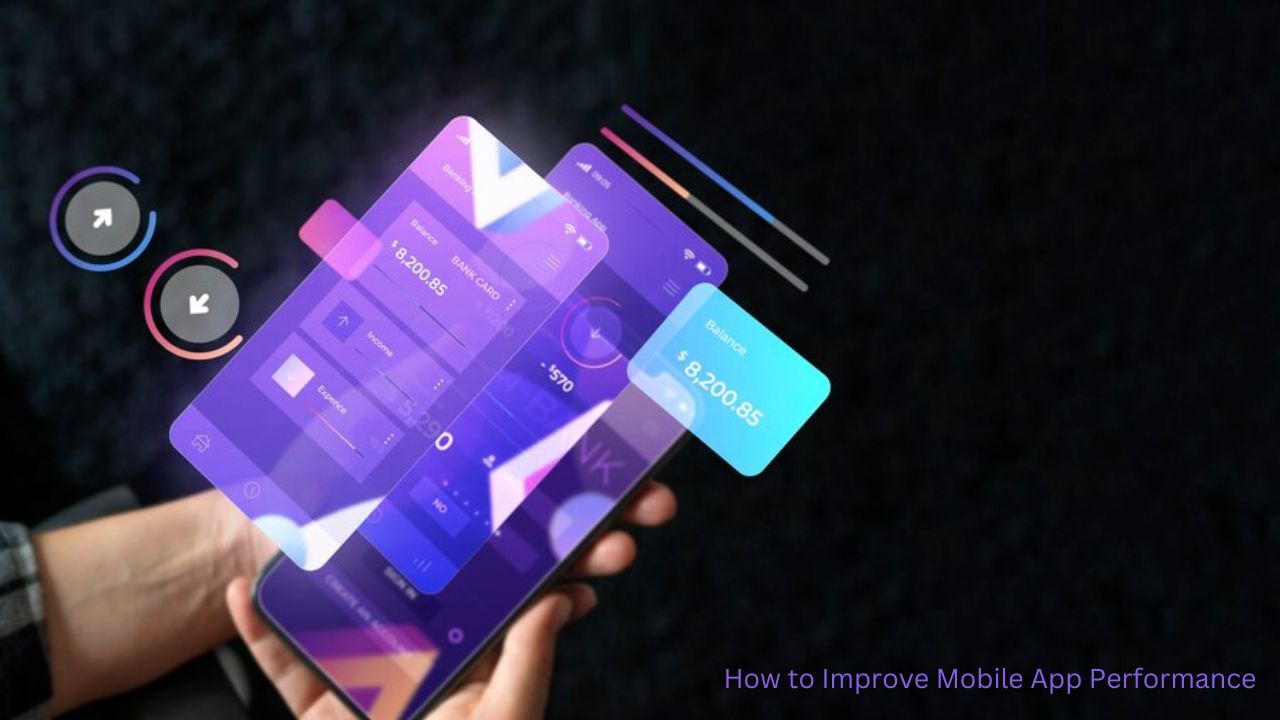Mobile app performance directly impacts user satisfaction and engagement. Users expect fast, smooth, and reliable experiences when interacting with apps. Therefore, slow or inefficient apps often lead to uninstalls and negative reviews. This makes optimizing mobile app performance critical for retaining users and staying competitive in the market. Let’s explore various methods to enhance your mobile app performance and ensure it meets user expectations.
Why Mobile App Performance Matters
Mobile app performance is crucial for attracting and retaining users. With millions of apps available, users quickly abandon poorly performing ones. Mobile apps that run slowly or crash frequently create a frustrating user experience, which damages your app’s reputation. Moreover, high-performance apps rank better on app stores, leading to increased visibility and downloads. Consequently, improving performance directly impacts your app’s success and user retention.
Identifying Bottlenecks in Mobile App Performance
Before optimizing your app, you must identify the underlying performance bottlenecks. Begin by analyzing user feedback, looking for complaints about app speed, crashes, or excessive battery usage. In addition, use performance monitoring tools like Firebase or New Relic to track app performance in real-time. These tools can help you identify areas where the app lags, such as long load times or high memory consumption.
Optimizing the User Interface (UI) for Speed
The user interface plays a crucial role in mobile app performance. A cluttered or overly complex UI can slow down the app’s responsiveness. Simplify your app’s UI by reducing the number of elements that need rendering. For instance, avoid using high-resolution images unnecessarily, as they increase load times. Additionally, employ lazy loading for images and other media content to ensure that assets load only when required, enhancing the overall app speed.
Reducing App Load Times
App load time is one of the most critical factors in determining performance. Slow load times often cause users to abandon the app even before interacting with it. Minimize load times by reducing the app’s initial data load. Consider compressing assets like images, CSS, and JavaScript files. Use caching strategies to store frequently accessed data locally, allowing the app to load faster without constant server requests. Implementing efficient loading practices ensures users stay engaged from the moment they open your app.
Optimizing Network Requests
Network latency significantly affects mobile app performance. Apps often rely on network requests to fetch data, especially in content-driven applications. Reducing unnecessary network requests is key to optimizing performance. Implement batch requests instead of sending multiple individual requests, which reduces network overhead. Also, use efficient data formats such as JSON instead of XML to minimize the size of data transfers. Optimizing network communication can greatly enhance the app’s speed and responsiveness.
Implementing Caching Strategies
Caching improves mobile app performance by reducing the need for repeated server requests. You can store frequently used data locally, enabling faster retrieval when needed. Implement caching at different levels, such as memory cache and disk cache, depending on your app’s data requirements. Proper caching not only decreases load times but also reduces battery consumption, as fewer resources are required for fetching data. Ensure to manage cache expiration to avoid outdated information being displayed to users.
Minimizing Memory Usage
High memory consumption often leads to app crashes and sluggish performance. Monitor your app’s memory usage regularly and identify components that consume excessive memory. Use memory profiling tools like Android Studio Profiler or Instruments for iOS to detect memory leaks and optimize memory management. Additionally, minimize the use of large data objects and clear unused resources to free up memory. Efficient memory management ensures a smoother app experience, especially on lower-end devices.
Enhancing Battery Efficiency
Battery drain is a common concern among mobile users, and apps that consume excessive battery tend to get uninstalled quickly. Optimize battery usage by reducing background processes and avoiding unnecessary GPS, camera, or sensor usage. Implement energy-efficient algorithms and reduce wake locks that keep the device from entering sleep mode. By focusing on battery efficiency, you not only improve app performance but also create a more user-friendly app.
Reducing App Size
App size plays a significant role in mobile app performance, especially in regions where data costs are high, or storage space is limited. Users prefer apps that are lightweight and quick to install. Optimize the size of your app by eliminating unused code, libraries, and resources. Consider using dynamic delivery, which allows users to download specific features as needed, rather than bundling everything in the initial download. Smaller app sizes lead to faster installations, better performance, and increased user adoption.
Improving App Responsiveness
Responsiveness is crucial for keeping users engaged. If users experience lags or delays when interacting with your app, they may perceive it as slow. Focus on improving the app’s responsiveness by prioritizing user actions. For instance, implement async tasks for heavy operations like data fetching or file processing, ensuring that the main thread remains responsive. Furthermore, reduce the time required for transitions and animations to create a smoother user experience.
Testing for Performance Across Devices
Mobile apps must perform well across a wide range of devices with different hardware capabilities. Test your app on both high-end and low-end devices to ensure consistent performance. Use emulators and real-device testing to identify performance issues unique to certain device models or operating systems. This approach helps you detect device-specific problems early and ensures that your app delivers a reliable experience to all users.
Utilizing Performance Monitoring Tools
Regular monitoring is essential for maintaining optimal mobile app performance. Tools like Firebase Performance Monitoring, New Relic, and Flurry provide insights into app performance in real-time. They track key metrics such as app load time, network latency, and battery usage, helping you identify potential issues before they impact users. Performance monitoring also enables you to make data-driven decisions, ensuring that your app continues to meet user expectations.
Balancing Features with Performance
Feature-rich apps can often suffer from performance issues due to the increased resource demands. As you add new features to your app, ensure they don’t negatively impact performance. Prioritize essential features and consider removing or streamlining those that add little value. By balancing functionality with performance, you create an app that is both engaging and efficient.
Optimizing for Different Operating Systems
Mobile apps must perform efficiently across various operating systems, including Android and iOS. Each platform has unique performance considerations. For example, iOS apps need to optimize for Metal, while Android apps benefit from reducing reliance on background services. Adapting your app to the strengths and limitations of each operating system ensures a seamless experience for users, regardless of the device they use.
Leveraging App Store Optimization (ASO) for Performance
App Store Optimization (ASO) not only helps your app rank higher but also improves user perception of its performance. ASO involves optimizing your app’s metadata, including the title, description, and screenshots, to reflect its performance benefits. Highlighting improvements such as faster load times, reduced crashes, and enhanced responsiveness can encourage more downloads. Additionally, regularly updating your app and maintaining good user reviews signals to app store algorithms that your app offers a high-quality experience.
Ensuring Security Without Compromising Performance
Mobile app security is essential, but it should not come at the cost of performance. Ensure your app uses encryption and secure communication protocols while maintaining efficiency. Avoid using excessive layers of security that slow down the app’s performance. Implement lightweight security measures such as token-based authentication and secure data storage practices that safeguard user data without compromising speed or responsiveness.
Streamlining Background Processes
Background processes are necessary for certain functionalities, such as notifications or data syncing. However, excessive background activities can drain battery life and slow down your app. Optimize background processes by limiting their frequency and only running them when necessary. For instance, schedule background tasks during periods of low activity to minimize their impact on performance. This approach helps maintain a balance between app functionality and efficiency.
Refining App Architecture
A well-structured app architecture lays the foundation for smooth performance. Use modular architecture, such as Model-View-ViewModel (MVVM) or Clean Architecture, to separate concerns and make your app easier to maintain. Modular architecture improves app scalability, making it easier to optimize performance as your app grows. Additionally, it helps in identifying performance bottlenecks within specific modules, allowing for targeted optimizations.
Utilizing Offline Mode
Offering an offline mode can significantly enhance user experience, especially in areas with unreliable internet connections. Offline mode reduces dependency on network requests, allowing users to access essential app features without waiting for data to load. Implementing offline functionality improves app speed and responsiveness while providing a seamless experience regardless of network conditions.
Frequent Updates for Ongoing Optimization
Regular app updates are essential for maintaining and improving performance. Address bugs, optimize new features, and respond to user feedback to ensure the app continues to meet user expectations. Additionally, updates should focus on refining performance metrics such as load times, responsiveness, and memory usage. Frequent updates also show users that your app is actively maintained, encouraging long-term engagement.
Conclusion
Optimizing mobile app performance is an ongoing process that requires attention to detail, from reducing load times to improving memory management. By focusing on the core aspects of performance, such as optimizing the UI, reducing app size, and implementing caching strategies, you create a fast, efficient, and user-friendly app. As mobile technology evolves, staying proactive in maintaining app performance will ensure that your app remains competitive in the market. Keep refining and updating your app to meet user expectations and deliver a superior mobile experience.
FAQs
How can I reduce my mobile app’s memory usage?
Monitor memory with profiling tools, minimize large data objects, and free up unused resources.
What is the role of caching in mobile app performance?
Caching reduces server requests, improves load times, and ensures faster data retrieval for users.
Why does my app drain the battery quickly?
Excessive background processes, GPS usage, and unnecessary wake locks often cause high battery consumption.
How can I improve app responsiveness?
Prioritize user actions, use asynchronous tasks, and reduce transition times for smoother interactions.
What are the best tools for monitoring app performance?
Firebase Performance Monitoring, New Relic, and Flurry provide real-time insights into app performance.
How do I optimize app size without losing features?
Remove unused code, employ dynamic delivery, and eliminate unnecessary libraries to reduce app size.











